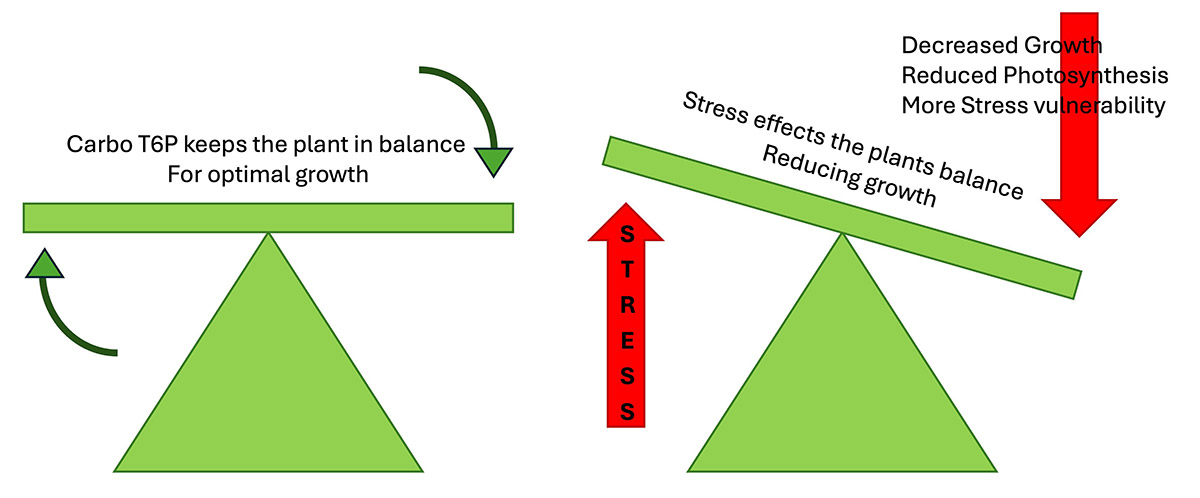
The sweetest treatment for your grass
Plant development depends on the strength of the „sink“ effect, stress factors like temperature ~ heat/cold, moisture ~ drought/waterlogging, salinity, weak nutritional status of the plant along with pests and disease, will reduce the strength of the sink and trigger the plant’s survival mode resulting in yield reduction.
SnRK1 is a gene complex in plants that regulates the stress response, it down-regulates sugar movement to focus on overcoming the stress thus limiting growth. Carbo T6P supports the plant to maintain the correct sugar balance and optimal growth even when under stress conditions.


Features
Benefits
Carbo-T6P enhances carbohydrate management within plants
What is it?
A unique carbohydrate signalling complex comprising T6P designed to enhance carbohydrate management within plants.
What does it do?
The unique combination work synergistically to enhance the storage and transportation of sugars within the plant.
It is one of the critical mechanisms linking carbon assimilation and the growth of plants.
It mitigates plant stress caused by adverse environmental factors.
In the growing parts of the plant the level of T6P signals how much sucrose is available for growth and accumulation of storage reserves.
It also impacts on development transitions within plant physiology e.g. flowering leads to seed formation by linking development to sugar supply T6P supports plants to maximise yield without running our of carbon before seed production is finished
How does it do it?
Through a process known as “neofunctionalism” excess sucrose produced in photosynthesis is diverted to newly fixed carbon and amino acids.
